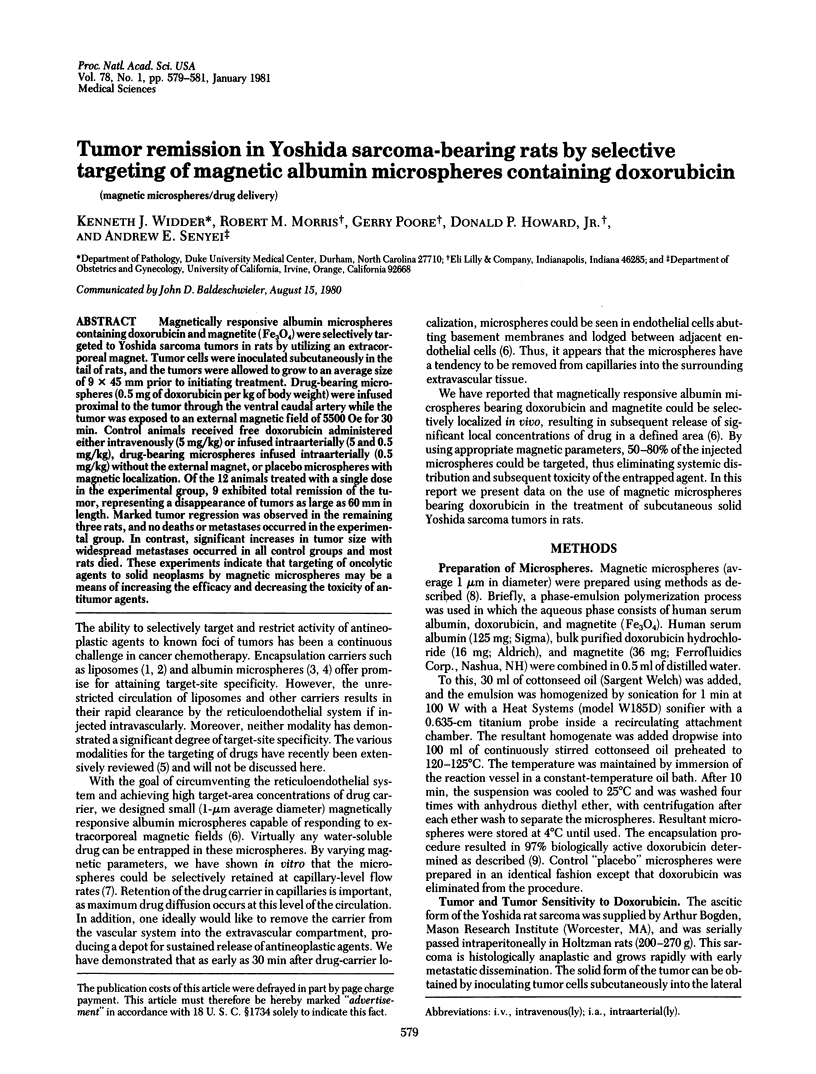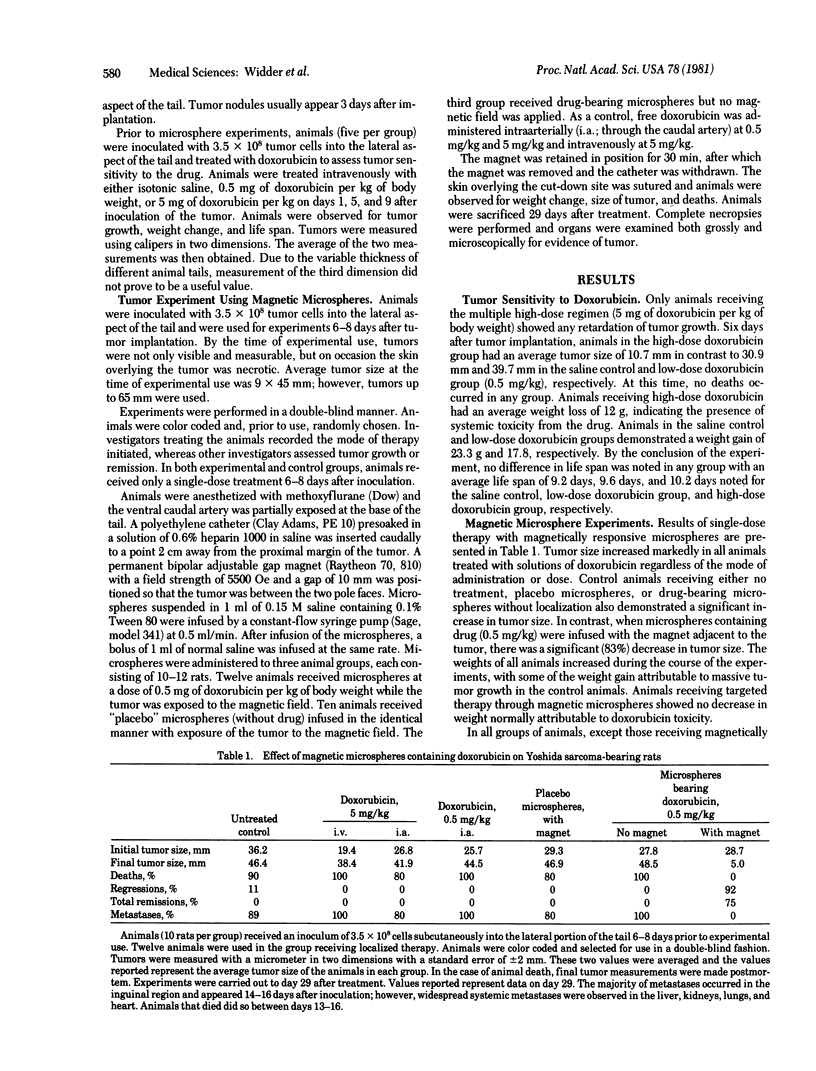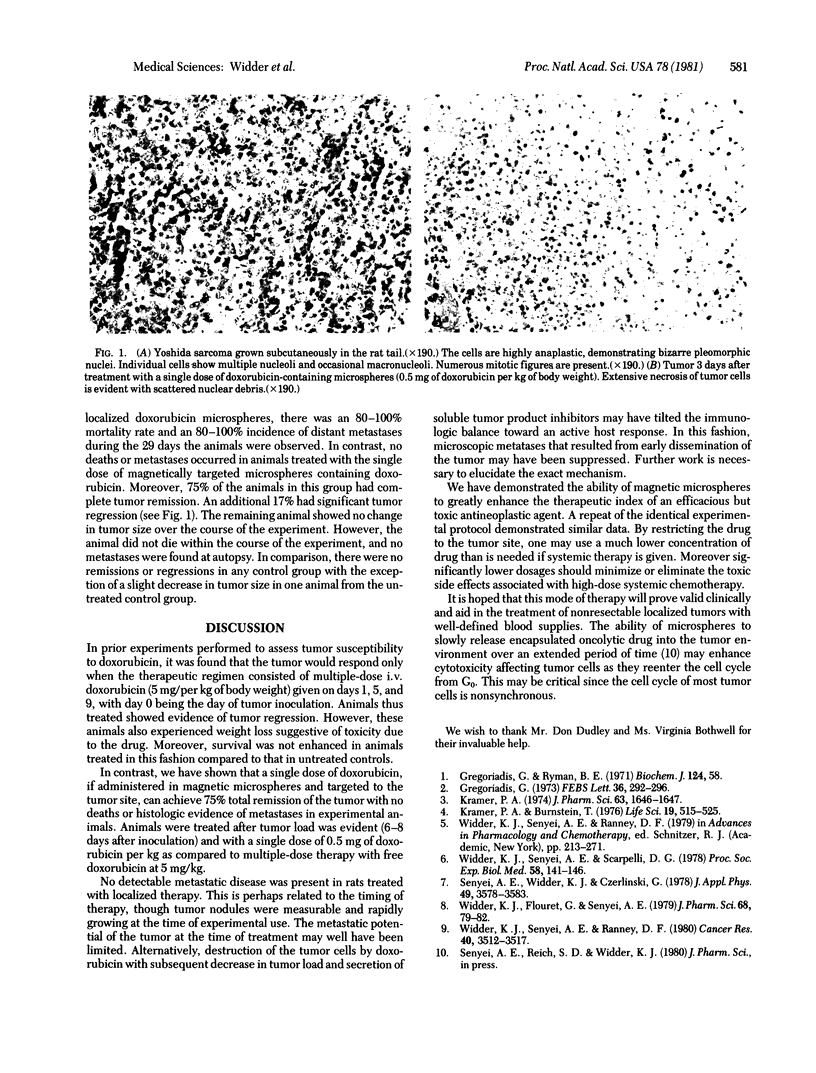Abstract
Magnetically responsive albumin microspheres containing doxorubicin and magnetite (Fe3O4) were selectively targeted to Yoshida sarcoma tumors in rats by utilizing an extracorporeal magnet. Tumor cells were inoculated subcutaneously in the tail of rats, and the tumors were allowed to grow to an average size of 9 X 45 mm prior to initiating treatment. Drug-bearing microspheres (0.5 mg of doxorubicin per kg of body weight) were infused proximal to the tumor through the ventral caudal artery while the tumor was exposed to an external magnetic field of 5500 Oe for 30 min. Control animals received free doxorubicin administered either intravenously (5 mg/kg) or infused intraarterially (5 and 0.5 mg/kg), drug-bearing microspheres infused intraarterially (0.5mg/kg), without the external magnet, or placebo microspheres with magnetic localization. Of the 12 animals treated with a single dose in the experimental group, 9 exhibited total remission of the tumor, representing a disappearance of tumors as large as 60 mm in length. Marked tumor regression was observed in the remaining three rats, and no deaths or metastases occurred in the experimental group. In contrast, significant increases in tumor size with widespread metastases occurred in all control groups and most rats died. These experiments indicate that targeting of oncolytic agents to solid neoplasms by magnetic microspheres may be a means of increasing the efficacy and decreasing the toxicity of antitumor agents.
Full text
PDF


Images in this article
Selected References
These references are in PubMed. This may not be the complete list of references from this article.
- Gregoriadis G. Drug entrapment in liposomes. FEBS Lett. 1973 Nov 1;36(3):292–296. doi: 10.1016/0014-5793(73)80394-1. [DOI] [PubMed] [Google Scholar]
- Kramer P. A., Burnstein T. Phagocytosis of microspheres containing an anticancer agent by tumor cells in vitro. Life Sci. 1976 Aug 15;19(4):515–519. doi: 10.1016/0024-3205(76)90230-7. [DOI] [PubMed] [Google Scholar]
- Kramer P. A. Letter: Albumin microspheres as vehicles for achieving specificity in drug delivery. J Pharm Sci. 1974 Oct;63(10):1646–1647. doi: 10.1002/jps.2600631044. [DOI] [PubMed] [Google Scholar]
- Widder K. J., Senyei A. E., Ranney D. F. In vitro release of biologically active adriamycin by magnetically responsive albumin microspheres. Cancer Res. 1980 Oct;40(10):3512–3517. [PubMed] [Google Scholar]
- Widder K. J., Senyel A. E., Scarpelli G. D. Magnetic microspheres: a model system of site specific drug delivery in vivo. Proc Soc Exp Biol Med. 1978 Jun;158(2):141–146. doi: 10.3181/00379727-158-40158. [DOI] [PubMed] [Google Scholar]
- Widder K., Flouret G., Senyei A. Magnetic microspheres: synthesis of a novel parenteral drug carrier. J Pharm Sci. 1979 Jan;68(1):79–82. doi: 10.1002/jps.2600680124. [DOI] [PubMed] [Google Scholar]




